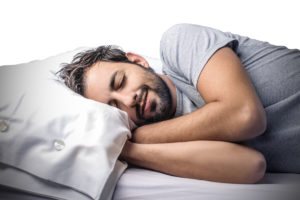Wellness
Question of the Month: May 2019
Have you or the policymakers at any facilities where you work shared guidelines about positive body talk or about language that could contribute to body shame among members or clients? Share your best practices and illustrative stories on how you or your facility management promote positive body image in staff and fitness participants.
We want to hear from you!
Fitness Pros Influence Body Satisfaction
Women in a group exercise class experienced greater body satisfaction and better moods when the instructor made motivational comments related to strength and health instead of weight or appearance.
Move Over, Happy Meal®
Recent research shows how our dietary choices can help turn a frown upside down.
The State of Health and Wellness Coaching
In 2017, the Global Wellness Institute launched an initiative called the Wellness Moonshot, seeking a collaborative effort between the wellness and healthcare communities to rid the world of chronic, preventable disease (GWI 2017). According to the World Health Organization, cardiovascular disease, chronic respiratory disease, diabetes and cancer—all of them noncommunicable diseases—account for more than two-thirds of premature deaths worldwide (WHO 2018).
Inside the Latest Physical Activity Guidelines
The more we move, the better we live. Even a few minutes of exercise is better than sitting still.
These are just two of the conclusions in the recent report from the 2018 Physical Activity Guidelines Advisory Committee, whose recommendations form a sound foundation for integrating exercise into our daily lives.
The Power of Simple Lifestyle Changes
Lifestyle choices have a significant impact on quality and length of life. With many Americans living longer than ever, fitness pros are on the front lines of a complex challenge: How will we help people remain active and engaged from their 60s into their 90s and beyond? How can we help them stay healthy to rein in healthcare costs?
How Resistance Training Affects Metabolism
Resistance training does much more than build strong muscles. Research has confirmed that resistance training affects metabolism, too.
Debating Alcohol Consumption and Risk
In our September 2018 issue of Fitness Journal, we reported on an international study published in The Lancet that found any level of drinking above 100 grams of alcohol (3.75 ounces) per week increases heart disease risk and shortens lifespan.
Rest, Recover, Repeat
For the health- and fitness-minded, discipline and behavior change are key tenets of keeping ourselves on a strong physical track. Whether it’s literally scheduling our workout time, thoughtfully planning and preparing our meals, or tracking our daily activity, we are pretty consistent about making these things happen.
Fit for Change
CLIENT: Sam Garman
PERSONAL TRAINER: Kali Stewart, MS
LOCATION: Milagros Fitness/Online Coaching, San Diego
Higher Vitamin D Levels Linked To Better Fitness
There’s another reason to make sure you’re getting enough of the sunshine vitamin: High levels of vitamin D in the blood are now linked with better fitness, according to research from the Virginia Commonwealth University School of Medicine.
Sleep Deprivation: You Are How You Sleep
Spending a third of our lives horizontal, hallucinating and paralyzed may sound like something from a scary sci-fi movie—but, in reality, these are good things. It’s all about sleep, and getting enough of it is essential.
More Paths to Exercise Recovery
When it comes to balancing your training program, your mindset should be, “Tomorrow’s workout begins with your recovery from today’s.” Recovery heals the pounding, twisting and tearing of physical activity. A well-thought-out strategy for recovery is becoming ever more crucial with the rising popularity of high-intensity workouts featuring barbells, kettlebells, heavy medicine balls, explosive plyometrics and anaerobic interval training.
Question of the Month: April 2019
When you design training programs for clients, do you take exercise enjoyment into account? What strategies do you use to find out which types of physical activities clients enjoy doing most? Through experience, have you found ways that work better than others? Share your best practices and illustrative stories on how efforts to optimize client enjoyment of physical activity have produced better training results.
We want to hear from you!
Creating Enjoyable Training Programs
Physical inactivity levels continue to rise in spite of widespread knowledge of the negative consequences. University of North Carolina at Chapel Hill researchers suggest the issue may not come from a lack of knowledge but from how exercise is programmed. Studies show that simply manipulating elements of the FITT principle (frequency, intensity, time and type of exercise) does not improve adherence to exercise.
The State of Metabolic Health
Public health may be compromised unless people shift their lifestyle choices from bad to better, according to new research. A recent study found that only 12% of American adults are “metabolically healthy,” and current trends raise a red flag on efforts to lower associated risks of type 2 diabetes, heart disease and other complications.
Deep Breathing and Mental Clarity
Next time you want to improve your ability to pay attention, you may want to observe your breathing. Findings from a study published in Psychophysiology (2018; doi:10.1111/psyp.13091) show that the locus coeruleus—the part of the brain that produces noradrenaline (also referred to as norepinephrine)—is directly affected by respiration. The study also shows that rates of inhalation and exhalation are related to attentional performance.
More Sleep vs. More Exercise
New research reveals that many working Americans are conflicted about whether to spend time exercising or sleeping. University of Pennsylvania investigators analyzed data from 48,000 adults who participated in the American Time Use Survey between 2003 and 2016. The researchers found that for most individuals sleep duration decreased as exercise duration increased, which led to the conclusion that exercise and sleep compete with each other for time.
Integrating Cognitive Training Into Exercise Programs for Older Adults
How can you “cognify” exercises to give your clients a big kick in the hippocampus? The basic ideas here can help you integrate cognitive stimuli into most exercises.
SMR Trends: Adopting Vibration Technology
The body of evidence in favor of self-myofascial release (SMR) techniques has been steadily growing. Research has shown that SMR can increase joint mobility and range of motion and reduce muscle soreness. It is used by personal trainers, athletic trainers and physical therapists alike to prevent and treat injuries in clients.


















